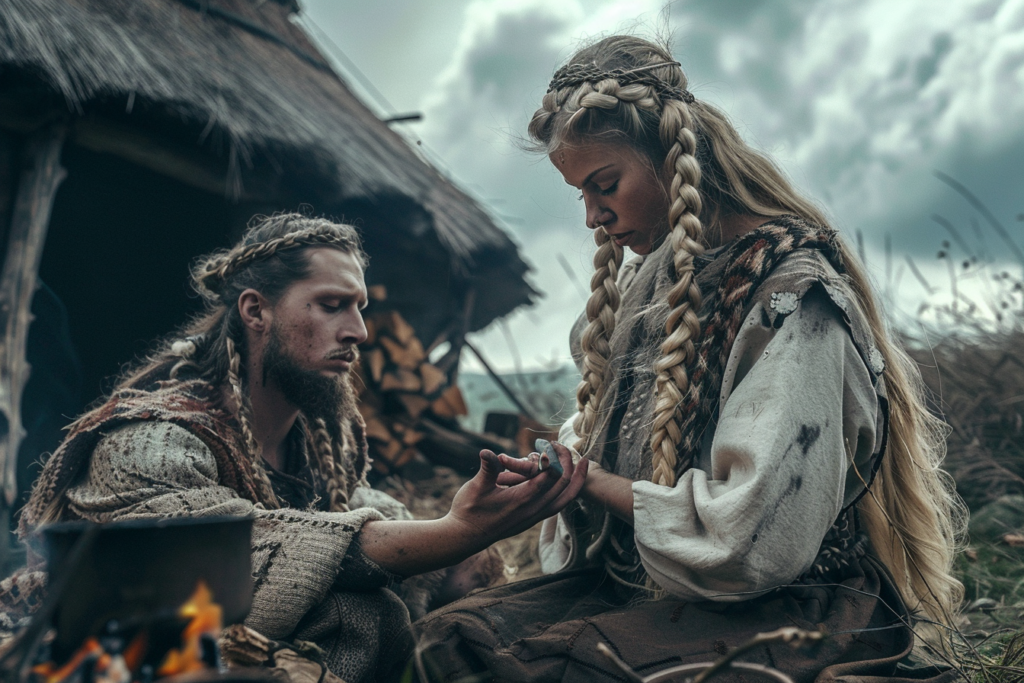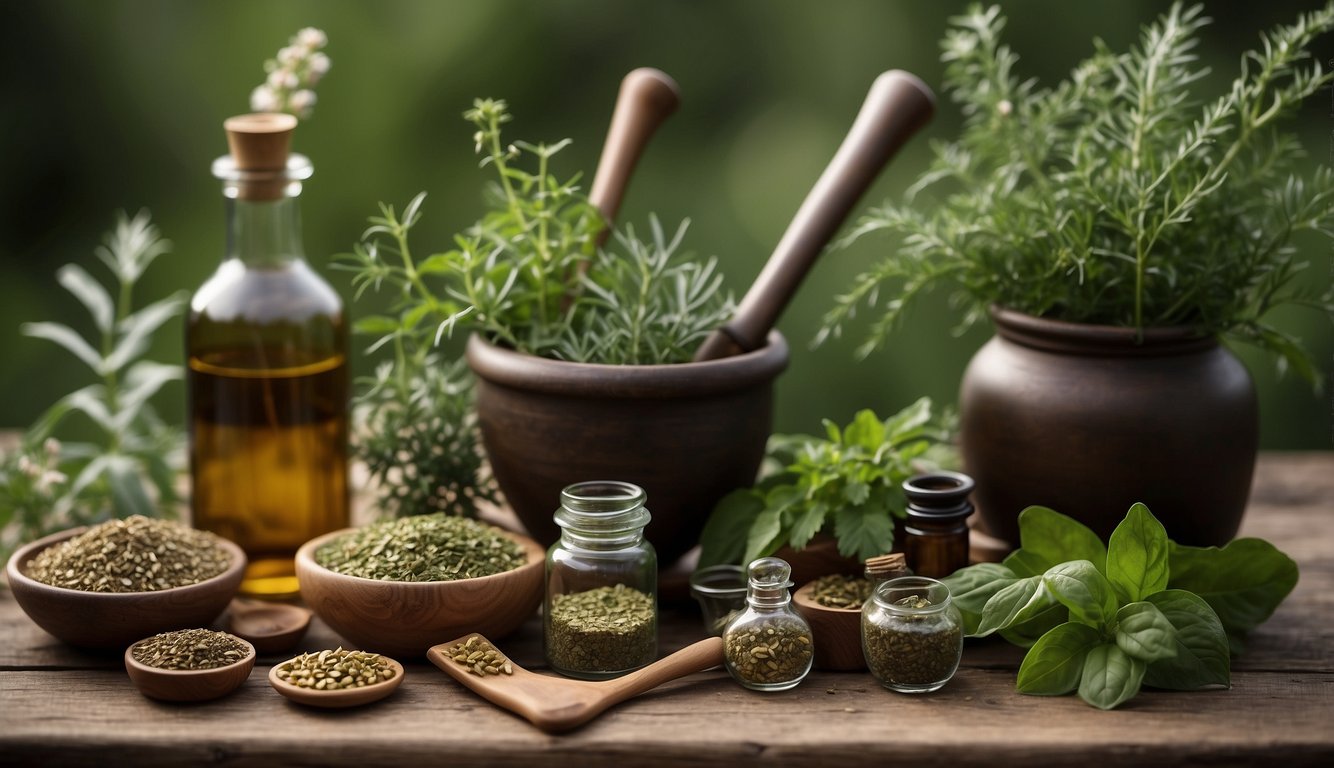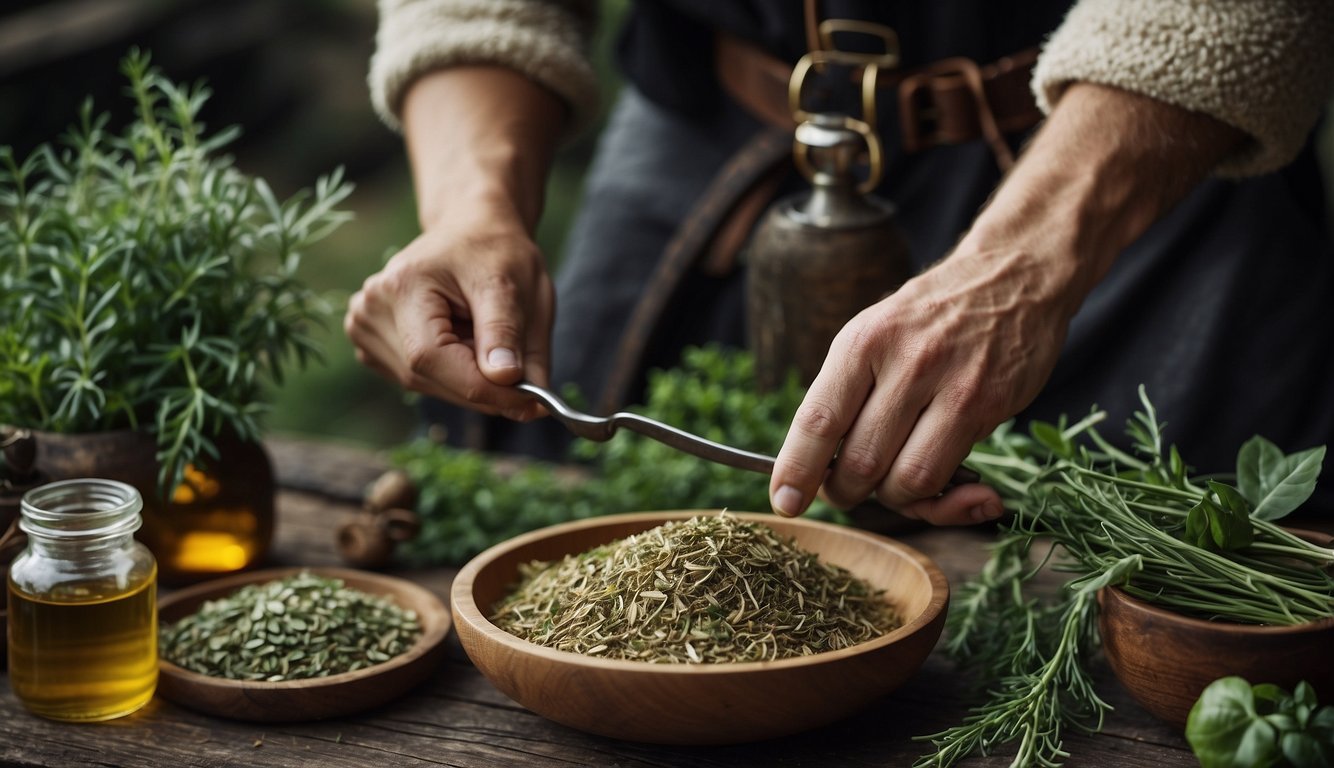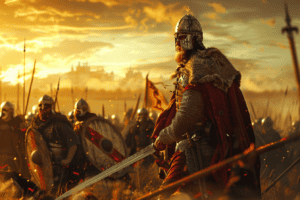The Vikings were a seafaring people from Scandinavia. They lived during the Viking Age, which began in the late 8th century and lasted until the mid-11th century.
They were known for their fierce warrior skills and their raids on other lands, but they were also skilled in other areas, including medicine and healing techniques.

During the Viking Age, medicine and healing were not as advanced as they are today, but the Vikings had their own methods of treating illnesses and injuries.
They believed that illnesses were caused by supernatural forces. They used a combination of magic, herbal remedies, and surgery to treat them. They also used a variety of tools, such as knives, saws, and forceps, to perform surgeries.
Some of the most common ailments that the Vikings treated included wounds, broken bones, and infections.
They used a variety of herbal remedies to treat these conditions, including yarrow, chamomile, and St. John’s wort. They also used honey to treat wounds and infections, as it has natural antibacterial properties.
Historical Context of Viking Medicine

Viking Age Healthcare Practices
The Vikings were known for their fierce warrior culture, but they also had a deep understanding of medicine and healing. During the Viking Age, healthcare practices were a blend of magical and practical methods. The Vikings believed that illnesses were caused by supernatural forces, and they used magical spells and amulets to ward off evil spirits.
At the same time, the Vikings also had a practical approach to medicine. They used a variety of natural remedies to treat illnesses and injuries. These remedies included herbs, animal parts, and minerals. For example, they used honey to treat wounds and garlic to ward off infections.
The Vikings also had a sophisticated knowledge of surgery. They were skilled at amputations, and they even performed brain surgery. They used primitive tools, such as bone saws and knives, but they were able to achieve remarkable success rates.
Role of Women and Men in Healing
In Norse culture, women played an important role in healing. They were often responsible for preparing medicines and caring for the sick. Women were also skilled in midwifery and childbirth. They had a deep understanding of the human body and were able to diagnose and treat a variety of illnesses.
Men also played a significant role in healing. They were often the primary physicians and surgeons. They were responsible for setting broken bones, performing amputations, and treating more serious illnesses. Men were also skilled in the use of herbs and other natural remedies.
Viking Herbal Remedies and Plants

The Vikings had a deep understanding of the healing properties of plants and herbs and used them extensively for medical purposes. They believed in the power of nature and utilized a variety of herbs to treat a wide range of ailments.
Common Herbs and Their Uses
Yarrow and plantain were two of the most commonly used herbs in Viking herbal remedies. Yarrow was used to treat wounds and stop bleeding, while plantain was used to soothe skin irritations and insect bites. Both herbs were also used to treat digestive problems and fever.
Other common herbs used in Viking medicine included chamomile, which was used as a sedative and to treat stomach cramps, and St. John’s wort, which was used to treat depression and anxiety.
Local Herbs and Archaeological Findings
The Vikings also utilized local herbs specific to the Norse region. Archaeological findings have revealed that the Vikings used a variety of local herbs, including angelica, juniper, and meadowsweet.
Angelica was used to treat respiratory problems, while juniper was used to treat joint pain and inflammation. Meanwhile, meadowsweet was used to treat headaches and fever.
Surgical Techniques and Treatment of Injuries

Bone Setting and Wound Care
The Vikings were known to be skilled in treating injuries and broken bones. They used a variety of techniques to set broken bones, including traction and splinting. They also used herbal remedies to treat wounds and prevent infection. For example, honey was used as an antiseptic, and yarrow was used to stop bleeding.
In addition to herbal remedies, the Vikings also used magic to heal injuries. According to the sagas, magic was used to heal injuries received in a duel. The injured person would be taken to a sorcerer, who would perform a ritual to heal the injury.
Surgical Tools and Antiseptic Methods
The Vikings did not have access to modern surgical tools, but they did have a variety of tools that were used for surgery. These included knives, saws, and bone drills. These tools were made from iron and were often heated before use to sterilize them.
To prevent infection during surgery, the Vikings used a variety of antiseptic methods. They would often clean the surgical site with a solution of vinegar and honey, which had antiseptic properties. They would also use a mixture of herbs, such as chamomile and thyme, to help prevent infection.
Spiritual Healing and Magic

The Vikings believed that certain spiritual practices and magical rituals could aid in healing and cure illnesses. Spiritual healing was a significant aspect of Viking medicine, and it was believed that the gods and goddesses could influence a person’s health and well-being. This section will explore the various spiritual healing and magical practices used by the Vikings.
Rituals and Charms
The Vikings believed that certain rituals and charms could help cure illnesses and promote good health. These rituals and charms were often performed by the seers and völvas, who were considered to have a strong connection to the gods and goddesses. They would use various objects and symbols, such as runic inscriptions, to create their charms and perform their rituals.
One of the most common rituals was the use of chants and songs to invoke the gods and goddesses. These chants and songs were believed to have magical properties that could help cure illnesses and promote good health. The Vikings also believed that certain objects, such as amulets and talismans, could help protect them from illness and other dangers.
Seers and Völvas
The seers and völvas were highly respected members of Viking society. They were believed to have the ability to communicate with the gods and goddesses.
They would use their abilities to perform various spiritual healing and magical practices. These practices included divination and prophecy.
The seers and völvas were also believed to have the ability to communicate with the dead. They would often use this ability to gain insight into the future.
The Vikings believed that spiritual healing and magical practices could aid in the healing process and promote good health. The seers and völvas played a vital role in these practices, and they were highly respected members of Viking society.
The use of charms, rituals, and runic inscriptions were all common practices used by the Vikings to promote good health and well-being.










Add Comment